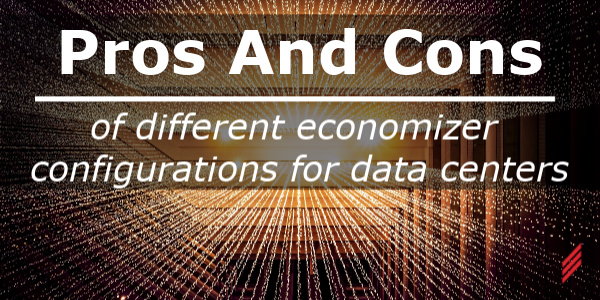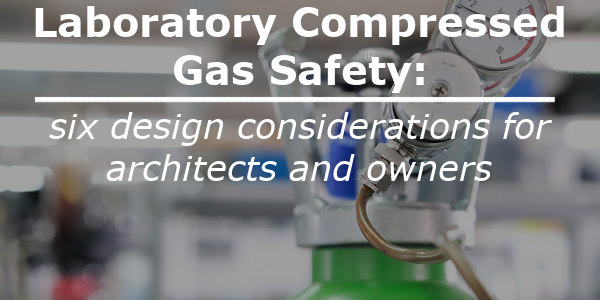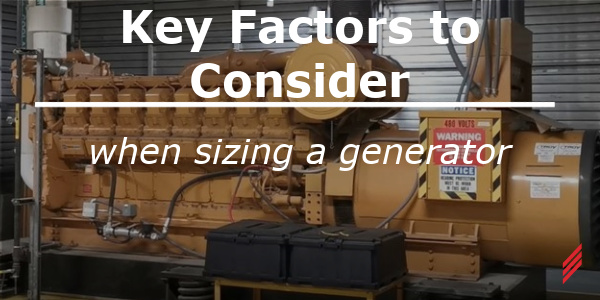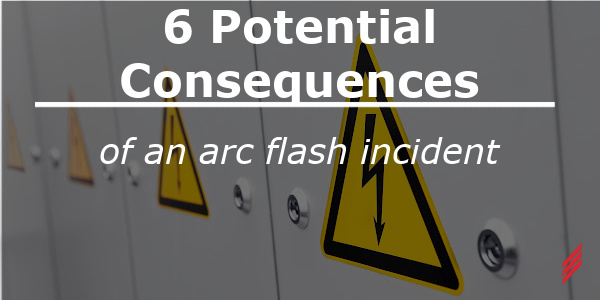Pros and Cons of Different Economizer Configurations for Data Centers
by Drew Hamilton on Jun 1, 2023 10:39:29 AM

Chances are you have used a smart phone recently to look up directions, check your friend’s social media, read a restaurant review or for numerous other tasks that have become common place in today’s society.In addition to Steve Jobs, you have the developers, designers and operators of data centers to thank for this convenience. A data center is a building, usually quite large, that houses a group of servers to process and store large amounts of electronic data. For a mechanical engineer the data center provides an interesting case study into mechanical cooling. The servers inside the data center use a massive amount of electricity, which in turn produces an equal amount of heat that must be managed by the mechanical system. What makes data centers unique, in addition to the amount of cooling, is the 24/7/365 operation of the servers. This requires the mechanical design engineer to provide a cooling system that will operate non-stop for the life of the building. As many people know, running an air conditioner is energy intensive and expensive. The solution to this, that applies to all types of buildings but is magnified by the scale of the data center, is an economizer.
An economizer in the mechanical engineers world is a device or system that takes advantage of environmental conditions to reduce the cooling load on the system. It is often referred to as “free-cooling” because it allows you to turn off the compressors, which are the major energy consumer in a mechanical system. There are three types of economizers used in the data center world; Air-side, Water-side or Refrigerant based economizer. As with most things in life, there are advantages and disadvantages with each configuration.
Air-side Economizer

The air-side economizer brings outdoor air directly into the space when the outdoor temperature and humidity are within acceptable ranges. Think of this as opening the windows at your house.
Pros
- Most applicable hours. Many data centers can run up to 70 degrees F at the inlet of the servers, therefore anytime it is below 70 degrees F outside you can be running in “free cooling” mode. In many climates, this is most of the year.
Cons
- It requires moving large amounts of air, which means large duct-work or shafts that eat up valuable real estate inside the building.
- All the air must be filtered. You do not want to introduce outdoor pollutants into your clean data center, changing all these filters can be a maintenance head-ache.
- Humidity requirements. Many servers can run in a wide range of temperature, but may have strict humidity requirements which can significantly limit the numbers of applicable hours.
Water-side Economizer

The water-side economizer uses cold outdoor air to cool water down to a temperature that can be used in cooling equipment. It typically is paired with a water-cooled chiller plant and operates with some type of outdoor cooling tower.
Pros
- Ease of installation. If a water-cooled chiller plant is the chosen system, it is easy to add water-side economizer to the operation with the addition of a heat exchanger. It uses all of the other components already in place to provide “free cooling” when the conditions allow.
- No negative effects on the computer room. No additional space is required and there is no risk of introducing outdoor pollutants to the space.
Cons
- Limited operating hours. The water-side economizer can typically only operate when it is below 35 degrees F. This is a significantly smaller number of hours than air-side economizer.
Refrigerant Based Economizer
This is the new kid on the block, introduced to the market in recent years. The refrigerant economizer is part of traditional air cooled DX systems and allows the refrigeration cycle to be completed without compressors when colder outdoor conditions allow.
Pros
- Space saver. The refrigerant economizer is a component of a stand-alone piece of cooling equipment. Unlike the other two systems, the refrigerant economizer system does not require any large mechanical rooms to house system components. This is valuable space that can be used to house computer equipment instead.
- The refrigerant economizer can operate when outdoor air temperatures are below 50 degrees F, and can do so without introducing outdoor air pollutants into the space.
Cons
- Proprietary design. The refrigerant economizer is a finely engineered process that is only available from a few vendors. Issues like maintenance and cost could be an issue.
- Installation limitations. Due to the nature of refrigerant flow there are limits to how and where components can be placed.
Many factors should be considered when selecting a cooling system for a data center; location, cost, maintenance, operating conditions, etc. However, all designs should include some type of economizer if for nothing else, it’s probably required by code. As an added bonus, it will most likely pay for itself in utility savings in the first few years of operation. A good design engineer will weigh all of the factors to provide the correct system to match each project.
About the Author
Drew Hamilton is a Mechanical Engineer with over 10 years of experience. He has extensive practice in all stages of projects from schematic and conceptual design through commissioning and building turnover. Drew has a passion for working with owners, designers and construction teams to deliver the highest quality product on each project. Drew holds a degree in engineering from Roger Williams University, and is a registered professional engineer.
Read My Hallam Story
About Hallam-ICS
Hallam-ICS is an engineering and automation company that designs MEP systems for facilities and plants, engineers control and automation solutions, and ensures safety and regulatory compliance through arc flash studies, commissioning, and validation. Our offices are located in Massachusetts, Connecticut, New York, Vermont and North Carolina and our projects take us world-wide.
You May Also Like
These Related Stories

Laboratory Compressed Gas Safety: Six Design Considerations for Architects and Owners

Key Factors to Consider when Sizing a Generator





No Comments Yet
Let us know what you think